Inside Windsor Castle: the history, interiors and secrets of the oldest royal home
Windsor Castle: a millennium of history
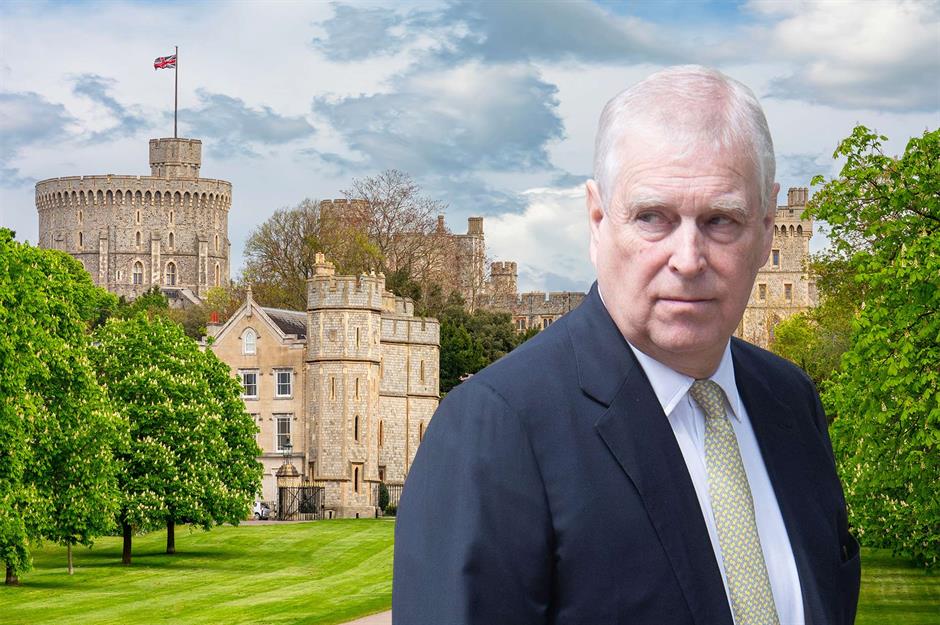
For nearly 950 years, Windsor Castle has been a favourite retreat for monarchs, and it’s easy to see why. Its majestic turrets, soaring towers, and historic moats embody the very essence of a classic English castle. Many royals have called the grounds of Windsor home, including Prince Andrew, who has been evicted from his Royal Lodge mansion.
It's the world’s largest inhabited castle and a true jewel of British heritage. With over 1,000 opulent rooms, priceless historic treasures and breathtaking grounds, this royal residence is nothing short of extraordinary.
Click or scroll to uncover the captivating history of Windsor Castle and the intriguing secrets hidden within its ancient walls...
Where is Windsor Castle?
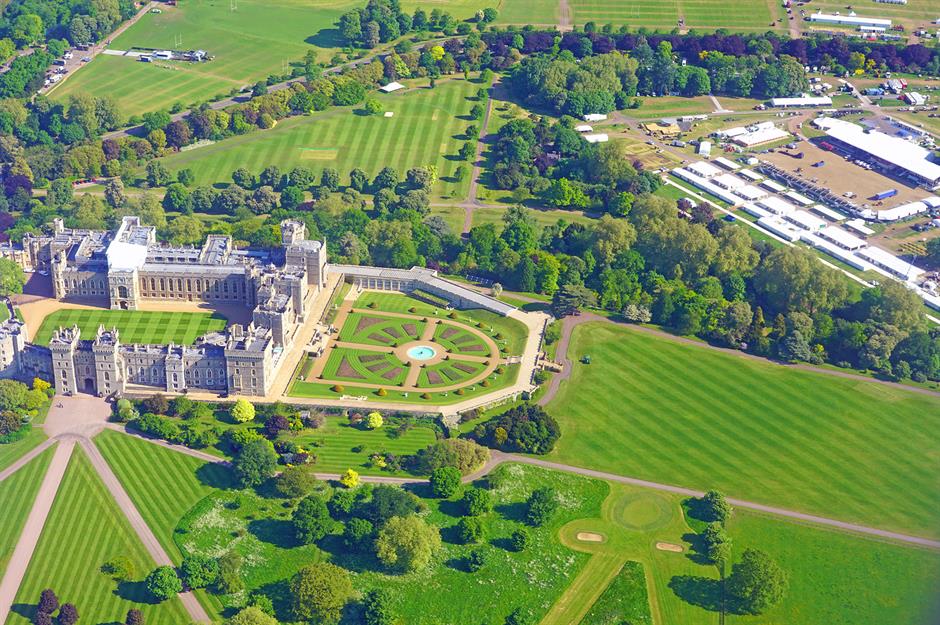
Windsor Castle sits on a sprawling 13 acres (5.2ha) of land in the county of Berkshire, in southeast England. Located between the historic town of Windsor to the west, the prestigious playing fields of the private boarding school Eton College to the north and the vast expanse of Windsor Great Park to the south, the castle’s origins stretch back to the 11th century.
Construction began in 1070, led by William the Conqueror, shortly after the Norman Conquest. Initially surrounded by wooden walls, these were replaced with sturdy stone fortifications during the reign of King Henry II in the 12th century. Over the years, Windsor Castle was transformed from a military stronghold into a royal palace, setting the stage for its future as a favourite residence of monarchs.
A hugely historic home
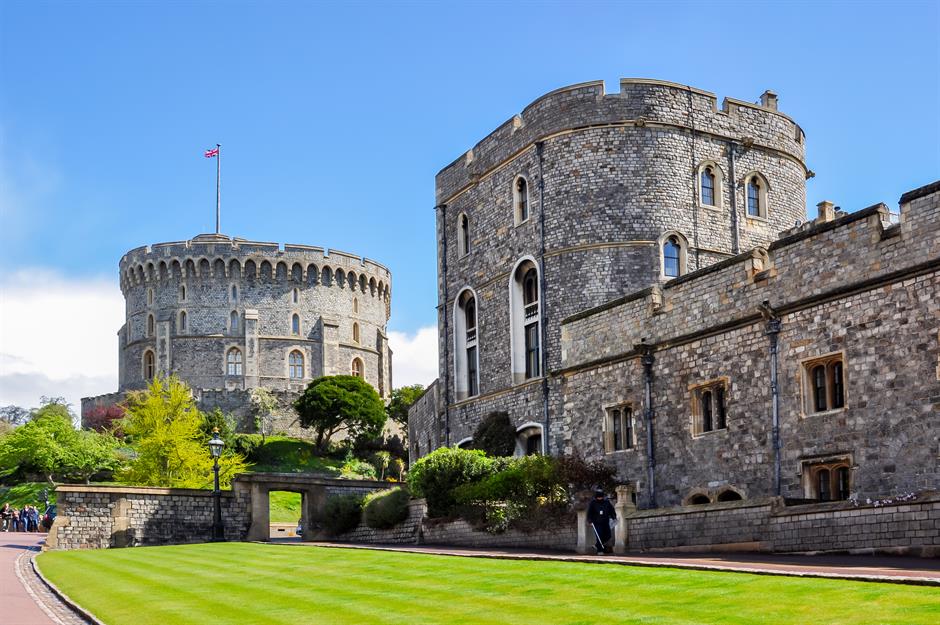
Today, while much has changed, the castle still bears the marks of its long history, blending medieval fortifications with centuries of royal tradition. Windsor Castle’s origins are deeply entwined with British history, having been home to 39 monarchs over the centuries. As the oldest continuously occupied castle in the world, its legacy is unparalleled.
Strategically positioned on the banks of the River Thames, it served to defend London from the west while also offering proximity to the royal hunting grounds of Windsor Great Park. But who lives in this impressive royal home?
Who lives in Windsor Castle?
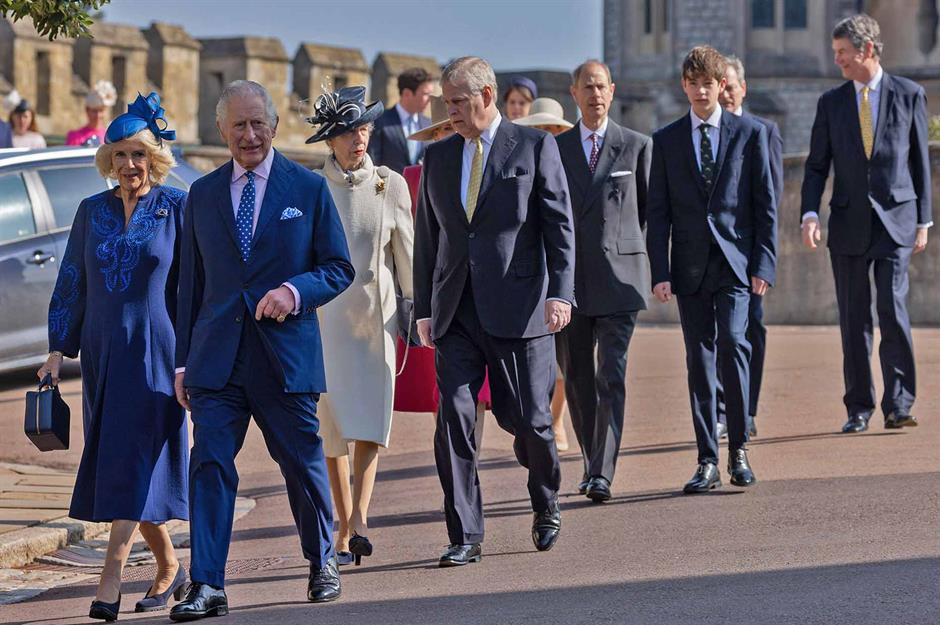
Of course, most people know that the castle was the official residence of the late Queen in the years before her passing. While the castle is priceless due to its royal ties and history, recent valuations estimated it would be worth more than £500 million ($683m).
King Charles has not chosen to follow in his mother’s footsteps, remaining instead at Clarence House, his long-term residence with Camilla in central London, but several other royals do live at Windsor or on the wider estate.
This includes some senior members of the royal family. Let's take a look at where on the vast estate they each call home...
Where does everyone live within the Windsor Estate?
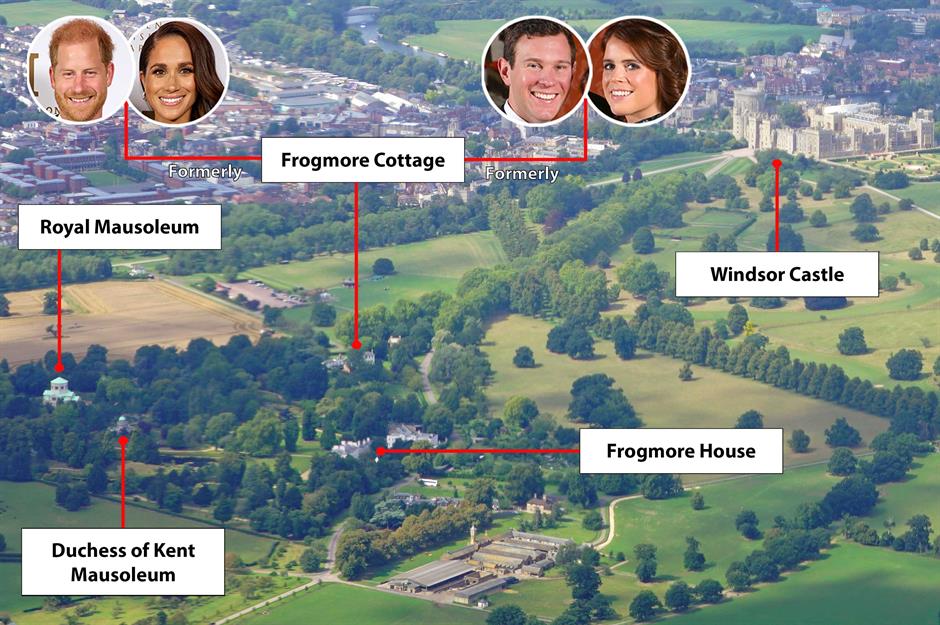
In addition to the castle itself, the Windsor estate includes many different royal residences. William and Kate have lived in Adelaide Cottage with their three children since 2022. However, they plan to move to Forest Lodge in Windsor Great Park by Christmas 2025. Other occupants have included Prince Andrew and his ex-wife, Sarah Ferguson, who resided in the Royal Lodge for more than 20 years.
Previous incumbents of the estate also include Prince Harry and Meghan Markle, who called Frogmore Cottage their British base until their 'eviction' in the early part of 2023.
Frogmore Cottage
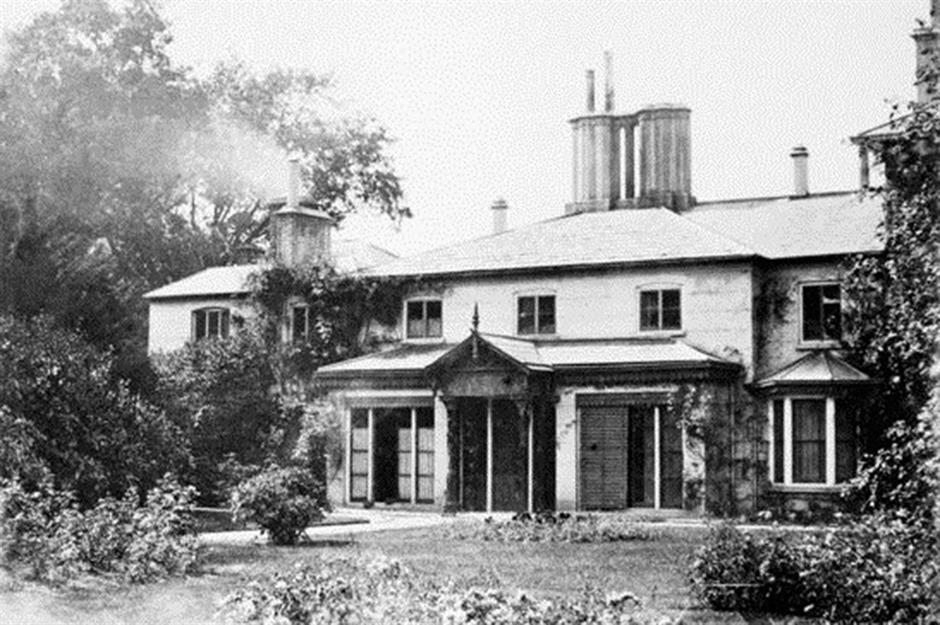
Frogmore Cottage has been home to many royals over the centuries. Having previously been divided into five properties, the cottage was converted back into a large family home specifically for Meghan and Harry at a reported cost of £2.4 million ($3.3m) in 2019. An amount the couple have since repaid.
It was also reported in British Hello! magazine that Princess Eugenie and her partner Jack Brooksbank moved into Frogmore with baby August Philip Hawke Brooksbank while the Sussexes were 'temporarily' living in the States between 2021 and 2022. Eugenie and Jack moved to Portugal in 2022, living in a lavish villa in the elegant Algarve town of Comporta.
Frogmore Cottage

However, in the wake of Harry’s condemnatory autobiography, Spare, the renegade royal pair were officially relieved of the property in early 2023. The New York Post reported that the eviction process began just one day after the bombshell tell-all was published.
With the cottage standing empty, King Charles reportedly tried to persuade his brother Andrew to move into Frogmore Cottage, but he resisted. He had been fighting to remain in his long-term home, the Royal Lodge, which he spent millions on renovating out of his own pocket.
Adelaide Cottage
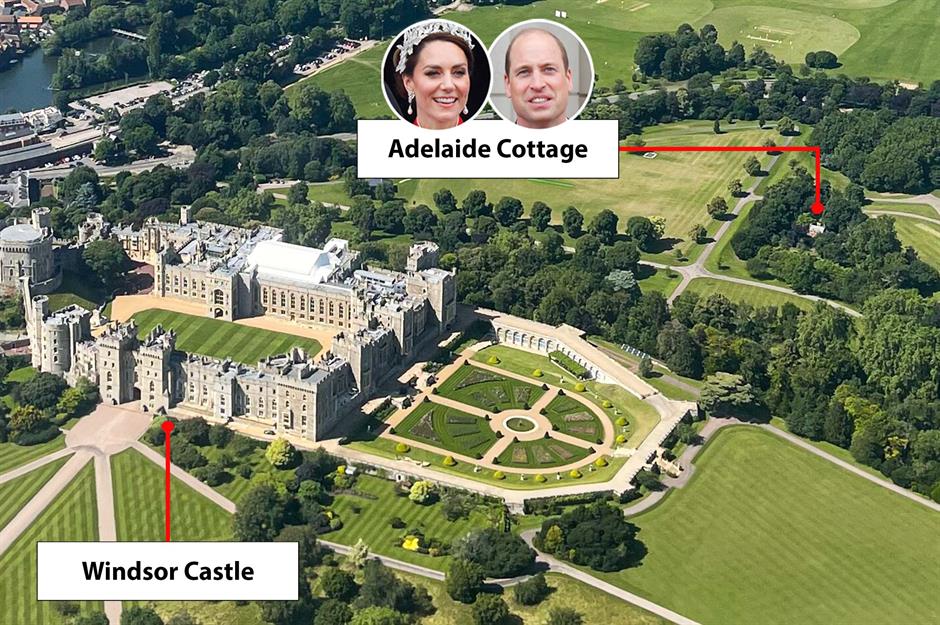
William and Kate, the Prince and Princess of Wales, along with their three children, George, Charlotte, and Louis, live in Adelaide Cottage, a Grade II-listed property located a short distance from St George’s Chapel on the Windsor estate.
This elegant four-bedroom home was originally built in 1831 for Queen Adelaide, the wife of King William IV. Renovated in 2015, the house is much bigger than the name suggests, and it required minimal work before the family moved in, which was an important factor for the practical couple.
Adelaide Cottage is also ideally situated for family connections. It’s just a 45-minute drive from Windsor Great Park to Kate’s parents’ home and conveniently close to her sister, Pippa Middleton.
Adelaide Cottage
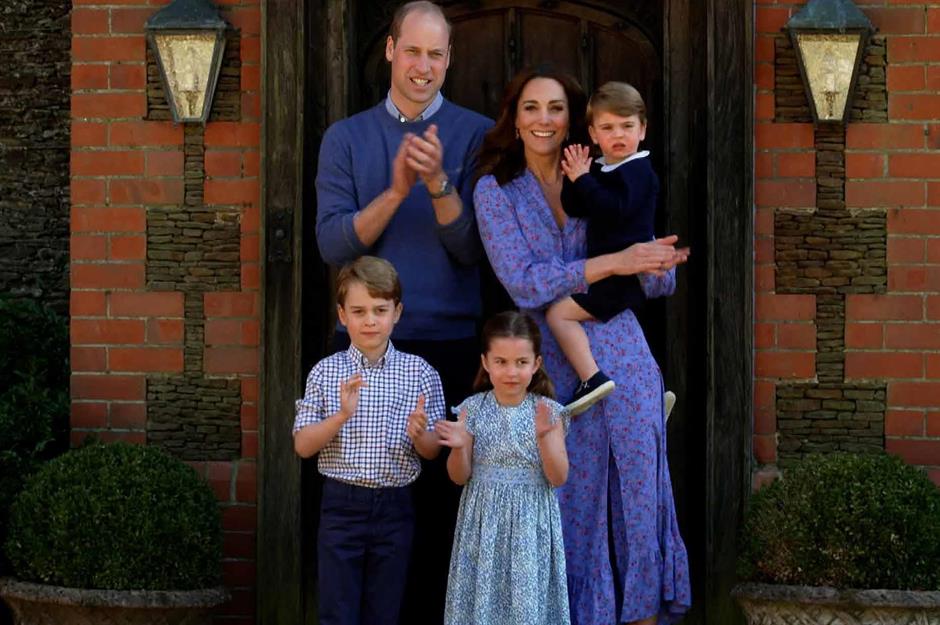
When William and Kate moved into Adelaide Cottage in September 2022, it was a somewhat unexpected choice for the future monarch. The house is markedly less grand than their opulent apartment in Kensington Palace but it allowed them to be close to the late Queen in her final months.
It also provides a more down-to-earth lifestyle to bring up their children. Prince George, 11, Princess Charlotte, 10, and Prince Louis, 7, are all settled at the nearby Lambrook School.
"They are very, very happy there," said royal commentator Katie Nicholls to British tabloid the Daily Mirror. "They're not overlooked and can come and go in complete privacy, [which] makes the downsize from Kensington Palace worth it on every level."
The Royal Lodge, Windsor Great Park
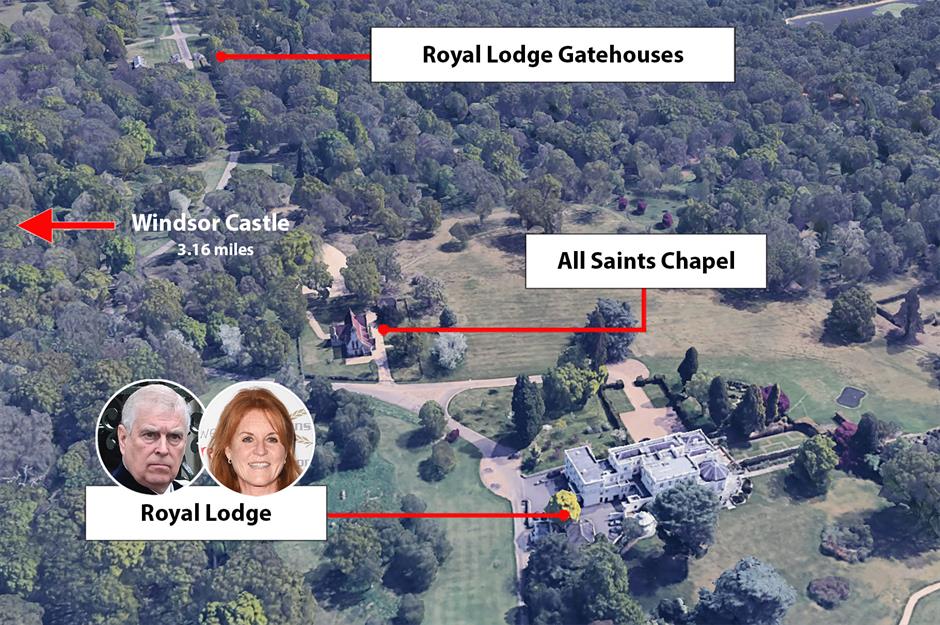
The controversial 'Problem Prince' Andrew had called the Royal Lodge, just a few miles from Windsor Castle, home since 2003. The 30-room mansion was formerly the residence of the Queen Mother and is where the late Queen Elizabeth II spent many weekends growing up.
Prince Andrew signed a 75-year lease with the Crown Estate for the Georgian property in 2003 and is said to have spent £7.5 million ($10.2m) in refurbishments, as well as putting down an initial £1 million ($1.4m) payment to secure the lease and paying a weekly rent of £250 ($342).
The Royal Lodge
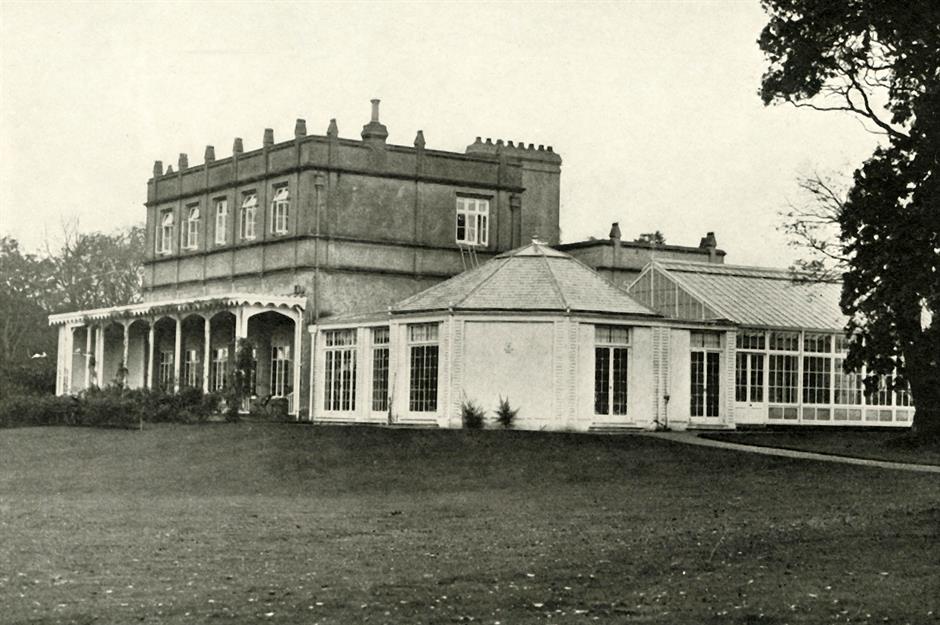
The Royal Lodge has origins dating back to the mid-17th century. Initially constructed as a modest timber-framed retreat for the Crown's park keepers, the building reflected the rustic architectural style of the period with exposed beams and simple, functional design.
A royal first took up residence in 1812 when the Duke of Clarence, later known as King William IV, moved in. He leased the property and made several improvements, transforming it into a more comfortable and elegant retreat. Georgian influences were introduced, including symmetrical façades, sash windows, and decorative cornices.
The Royal Lodge, Prince Andrew's former home
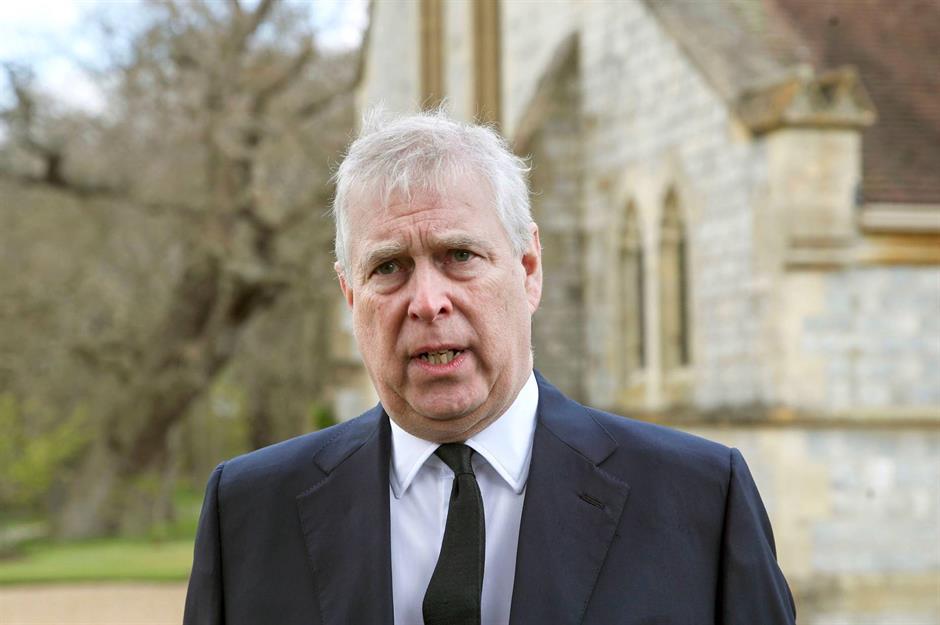
In recent years, speculation has been rife that Prince Andrew would be forced to leave the property if he could not afford its upkeep. Following a scandal over his association with convicted criminal Jeffrey Epstein, in 2019, public backlash required him to withdraw from all official duties. In 2022, the Queen further stripped him of his military titles, and he stopped using his HRH (His Royal Highness) title. Since this time, he had been required to cover the running costs of the huge home.
In November 2024, it was reported that Prince Andrew had secured the necessary funds for urgent repairs to the property after his allowance and private security were allegedly cut off by the King. There was even speculation that some of the residence’s "treasures", including items from the Royal Collection, had been removed.
Andrew leaves for good

In early October 2025, Andrew was forced to renounce his Duke of York title and, later that month, it was announced that the King had begun the formal process to strip him of his prince title. The historic statement also revealed that Andrew had agreed to at last leave the Royal Lodge.
Reports suggest the evicted prince will relocate to the King's 19,768-acre (8,000ha) Sandringham estate in Norfolk. It's thought that the King will privately fund the accommodation, while his ex-wife must now find her own residence.
The palace has not yet confirmed who will be the next prestigious occupant of the Royal Lodge, or whether it will be used for other purposes.
The Royal Household at Windsor Castle
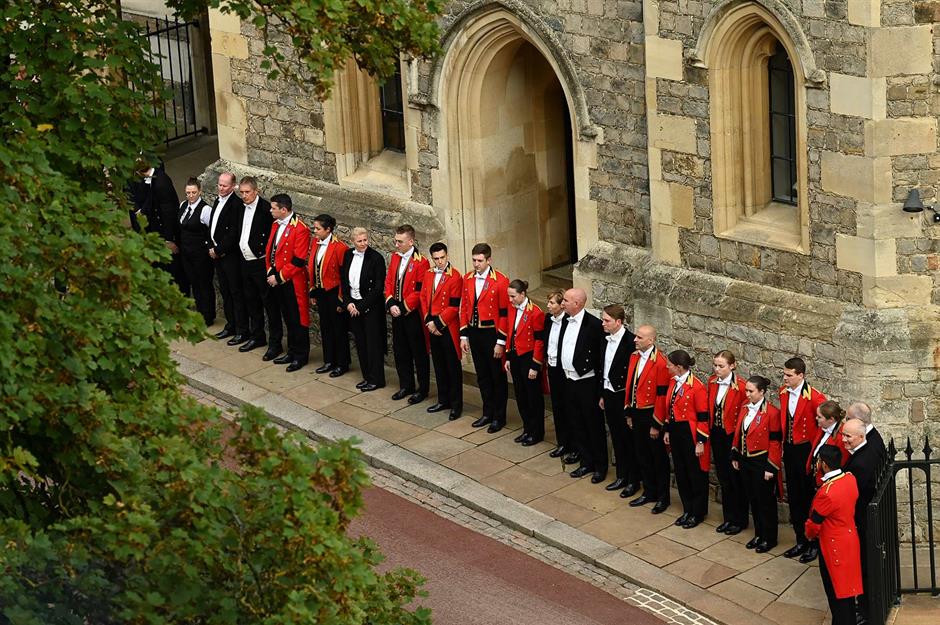
As the largest occupied castle in the world, Windsor Castle is not only home to the royal family but also to a dedicated team of staff who ensure its smooth operation. As you might expect, a royal residence of this scale requires a large, often residential workforce. Some of them are pictured here marking the day of the late Queen's funeral in 2022.
Among the key figures in this community are the Constable and Governor of Windsor Castle, who serves as the unofficial head of the castle, as well as the Military Knights of Windsor. Additionally, the Superintendent and his team oversee the day-to-day administration, ensuring everything runs seamlessly behind the scenes.
Windsor Castle staff residences
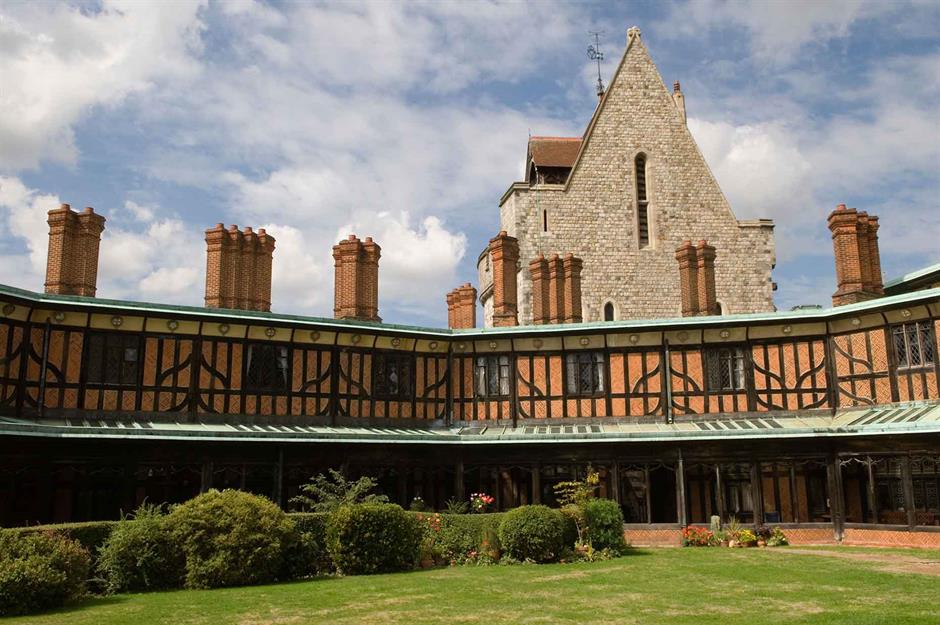
The Cloisters, a charming horseshoe terrace of half-timbered houses, have provided homes for the Dean of Windsor, the Canons and the devoted staff who have managed the College of St George for centuries.
However, they are not the only residents within the historic walls of Windsor Castle. The Housekeeper, her team, and the soldiers who maintain the castle’s permanent military guard also live within this royal fortress.
These residences, with roots stretching back to the 1500s, are rich in tradition and character, adding to the castle's enduring legacy.
The Cloisters at Windsor Castle
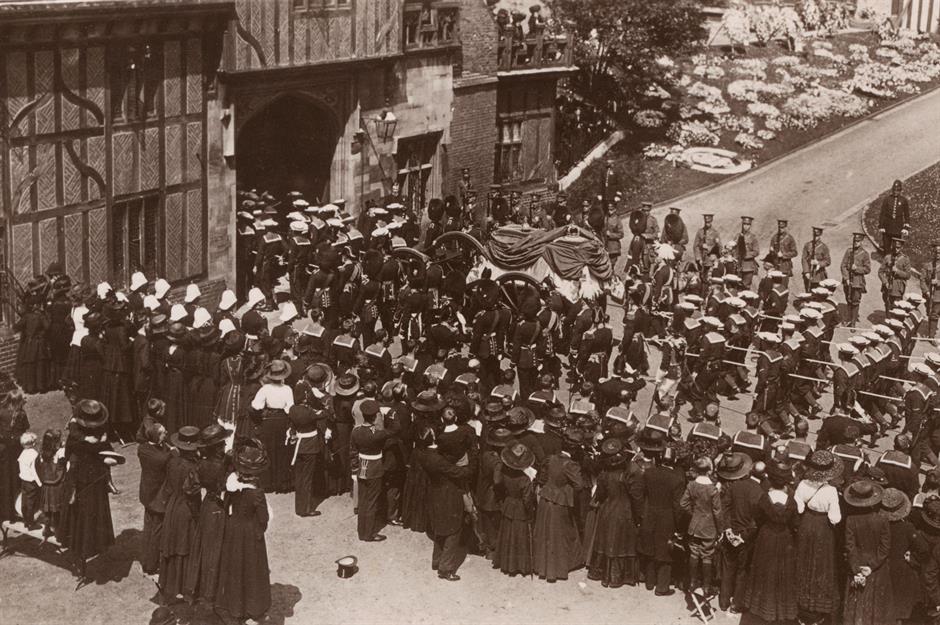
This photograph, taken in 1910, captures the funeral procession of King Edward VII as his body is brought to Windsor Castle. The Cloisters played a key role in the ceremonial and administrative life of the castle.
With their long history and connection to the College of St George, they were a fitting backdrop for such a significant event. The procession passed through the historic arcades as part of the ceremonial route.
The funeral procession of Edward VII was not only a poignant moment in British history but also a testament to Windsor Castle’s central role in the country’s royal traditions, serving as both a place of residence and a site for key national events.
Windsor Castle: a potted history
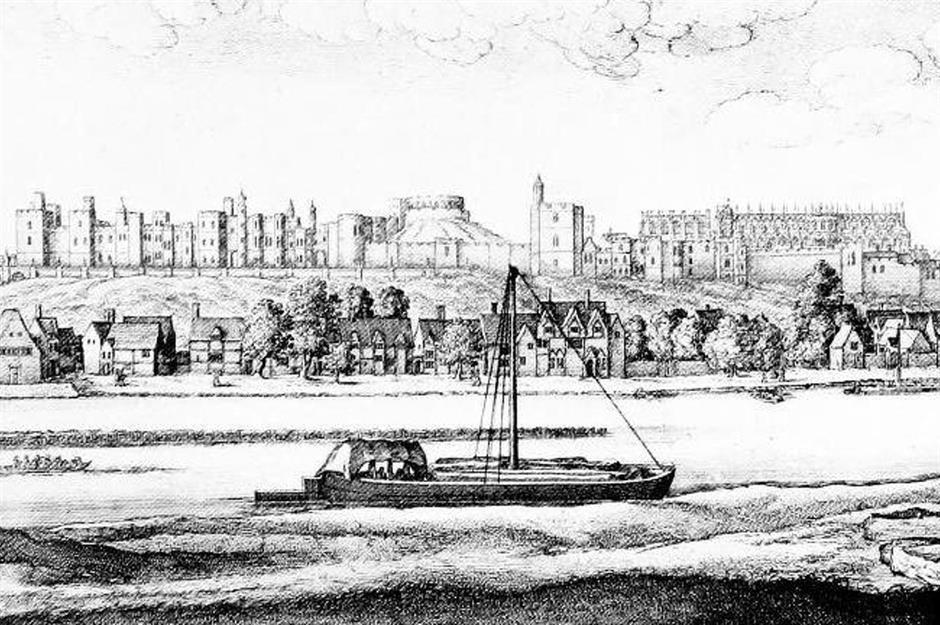
Now we know where everyone lives, let's explore some of the major transformations Windsor Castle has undergone.
This historical drawing shows Windsor Castle in 1672, seen from the River Thames. Back then, the castle was used by the Tudors. King Henry VIII was a frequent visitor and is interred beneath the quire in St George’s Chapel. Alongside him is his beloved wife, Jane Seymour, the only wife to bear him a legitimate male heir.
By the time Queen Elizabeth I took up residence at Windsor, many parts of the castle were in a state of disrepair. A comprehensive programme of restoration was carried out during the 1570s. Elizabeth added a long gallery overlooking the North Terrace, visible on the left in the drawing.
Windsor in the 1600s
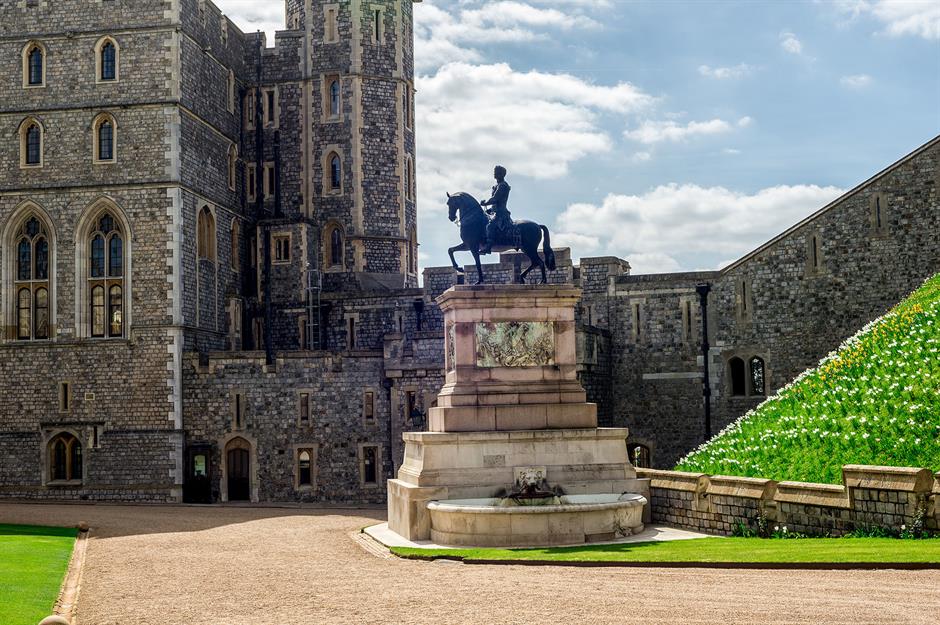
Adopted by Oliver Cromwell as his headquarters during the English Civil War from 1642-1651 and doubling as a prison for captured Royalists, by the time Charles II came to the throne in 1660, Windsor was in a poor state of repair once again.
Charles began another renovation project, this time to turn it into a grand residence. He transformed the State Apartments with wood carvings by Grinling Gibbons and painted ceilings by Antonio Verrio. This statue of Charles II was added in 1679.
A rival to Versailles
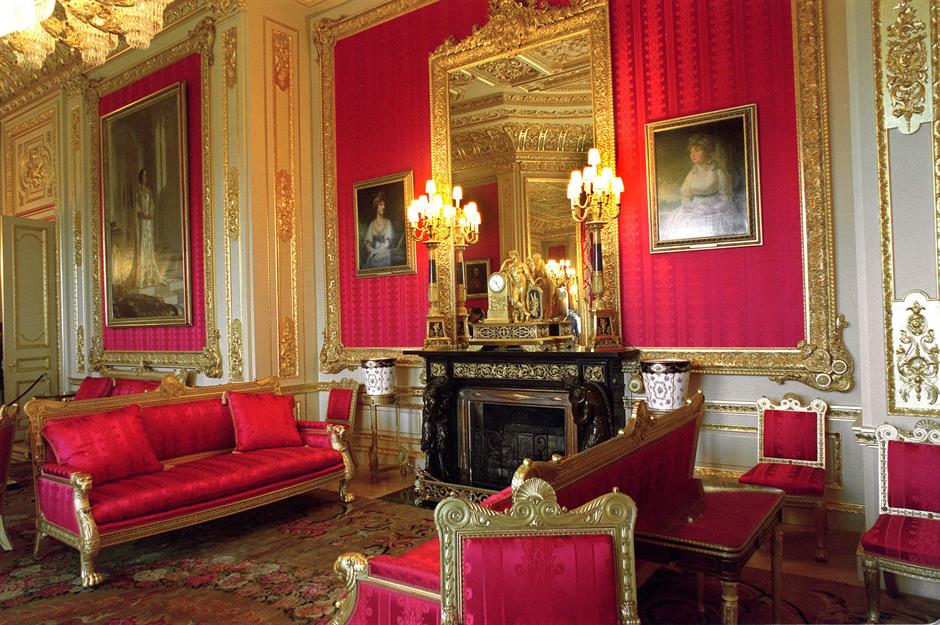
King Charles II created the lavish apartments you see today in a bid to rival his cousin King Louis XIV’s Palace of Versailles. This is the Crimson Drawing Room, after a full restoration, with silk wall coverings, gilded furniture and panelling, and lit with crystal chandeliers.
The castle also has an unrivalled art collection, with many Old Masters paintings on display, including those by Hans Holbein the Younger and Anthony van Dyck. There are also portraits of Henry VIII and a young Elizabeth I.
The Long Walk
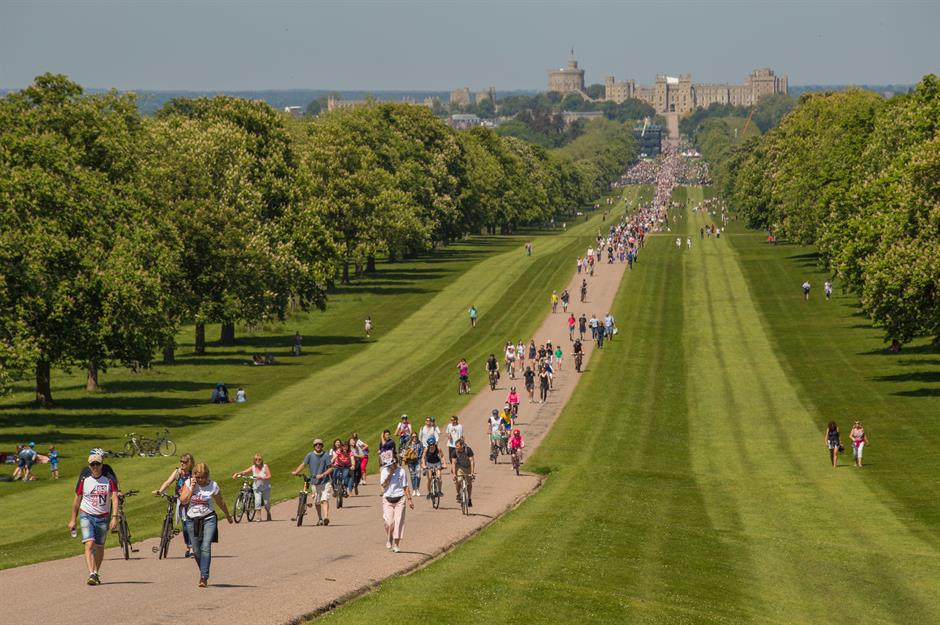
Charles II was also responsible for the addition of the Long Walk and had double rows of elm trees planted the entire length of the route. This 2.6-mile (5,280-foot) path leads from Windsor Great Park to the castle.
Windsor Great Park has hosted royalty since William the Conqueror’s victory at the Battle of Hastings. They enjoyed its riding and hunting opportunities and stunning scenery. William IV opened it to the public, so now everyone can enjoy the space.
A Georgian makeover
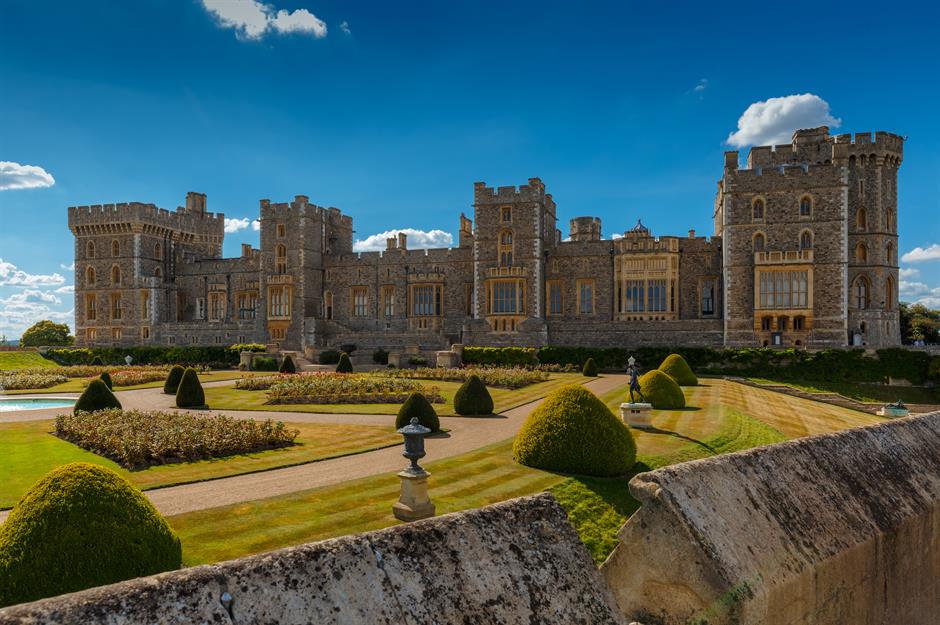
King George III played a pivotal role in reviving royal interest in Windsor Castle during his reign (1760–1820), recognising its historical significance and potential as a grand royal residence. Under his direction, St George’s Chapel underwent extensive restoration, ensuring its Gothic splendour was preserved for future generations.
To modernise the castle, George III enlisted the renowned architect James Wyatt, one of the most esteemed figures of his time. Wyatt was tasked with remodelling much of the Upper Ward, transforming it into a more comfortable and elegant living space while retaining its historic character. His work included redesigning interiors to suit contemporary tastes and improving the castle’s overall functionality as a royal home.
King George IV's expensive renovations
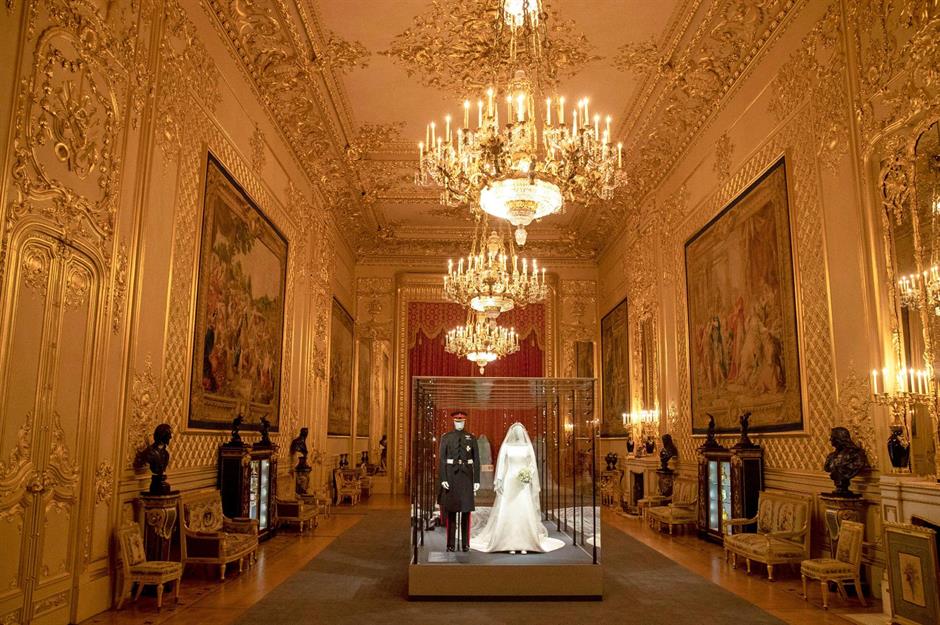
During the reign of the famously extravagant King George IV (1820–1830), Windsor Castle underwent a lavish transformation. Among the many enhancements were the Semi-State Rooms and the breathtaking Grand Reception Room, adorned with gilded walls, towering mirrors, and glittering chandeliers. These upgrades came at a staggering cost, equivalent to approximately £700 million ($956 million) in today’s money, reflecting George IV’s desire to create a palace of unparalleled splendour.
The Grand Reception Room, in particular, stands as a testament to the King’s vision. It later became the perfect setting for a special exhibition showcasing the wedding outfits of the Duke and Duchess of Sussex. Running until January 2019, the display celebrated their royal wedding held in May 2018 and offered visitors a rare glimpse into the couple’s iconic day against Windsor’s dazzling backdrop.
Queen Victoria at Windsor Castle
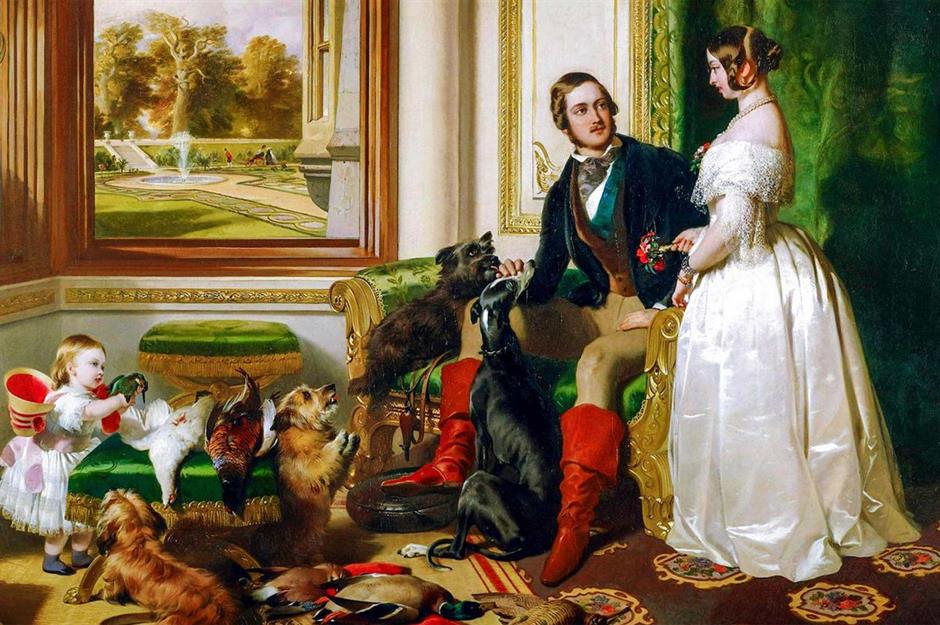
In 1837, Queen Victoria came to Windsor for the first time. During her reign, the castle became the main palace and a showpiece for the British Empire. It was here that Victoria hosted ambassadors and ministers from across the world.
This painting, commissioned in 1840, shows Queen Victoria, Prince Albert, and the Princess Royal in the White Drawing Room. It also shows the ornate Morel and Seddon furniture that was commissioned by George IV, and the view through the window shows the East Terrace. If you look carefully, you can spot Queen Victoria's mother, the Duchess of Kent, portrayed in the background.
Queen Elizabeth II at Windsor Castle
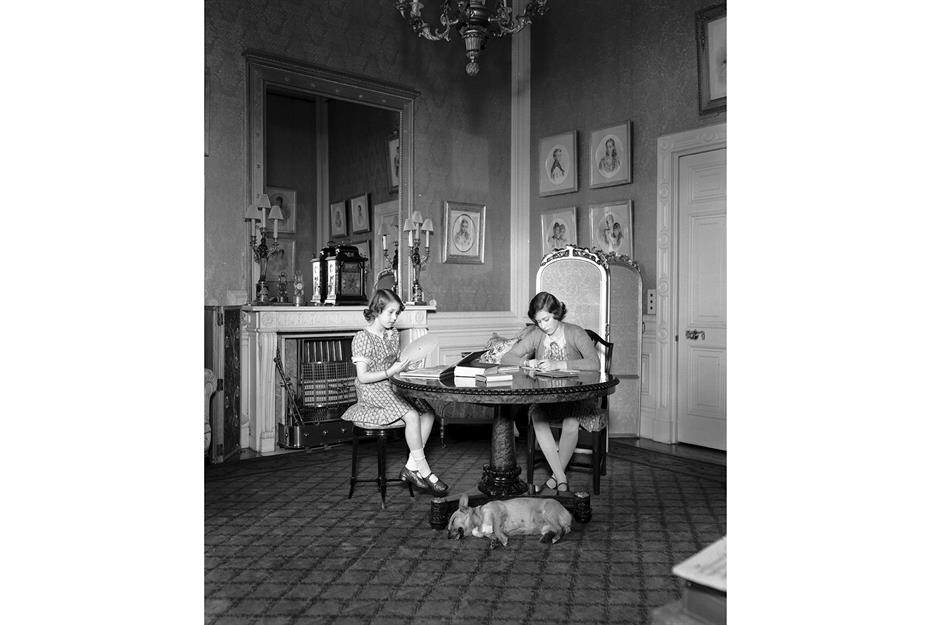
Fast forward to 1939, and Queen Elizabeth II, then Princess Elizabeth, was evacuated to Windsor Castle at the start of World War II. Along with her sister, Princess Margaret, she lived at the castle to ensure their safety during the Blitz, when London faced heavy bombing.
Given her early introduction to the castle, it is perhaps unsurprising that Windsor was always the Queen's favourite place of residence. Princess Elizabeth can be seen here playing with Princess Margaret in 1940 in an office.
That same year, Princess Elizabeth, aged 13, famously gave her first public broadcast on the BBC’s Children’s Hour in 1940, addressing children who had been evacuated from their homes.
The 1992 fire
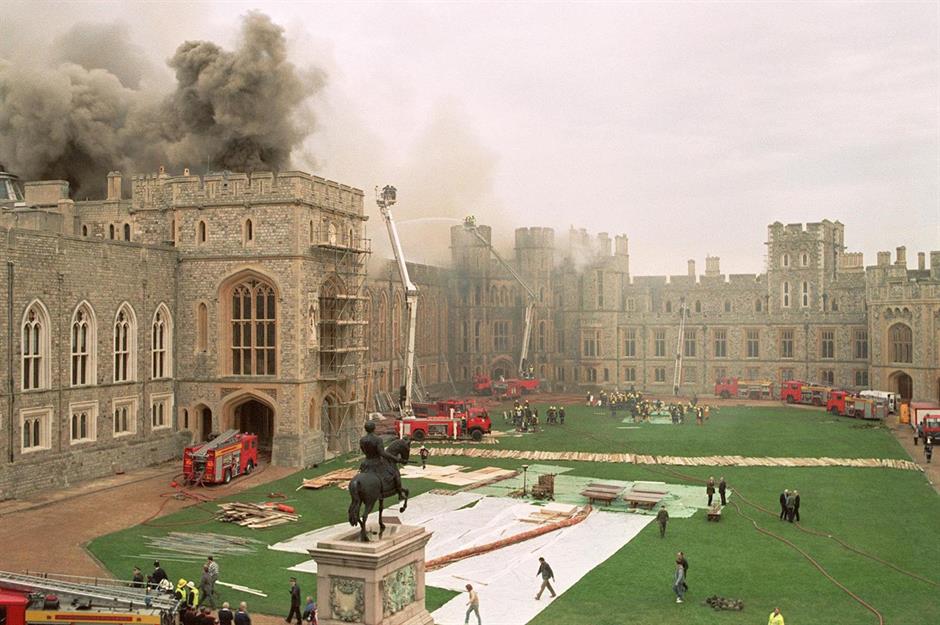
Not all of Queen Elizabeth II's time at Windsor was happy. In 1992, a catastrophic fire swept through Windsor Castle, reportedly originating in St George’s Chapel. The blaze caused extensive damage, sparking an ambitious five-year restoration project that would return the castle to its former glory.
Many of the interiors were meticulously restored to their original designs, preserving centuries of history. Meanwhile, others were reimagined and rebuilt with stunning new designs, seamlessly blending tradition and modern craftsmanship.
Restoring St George's Hall
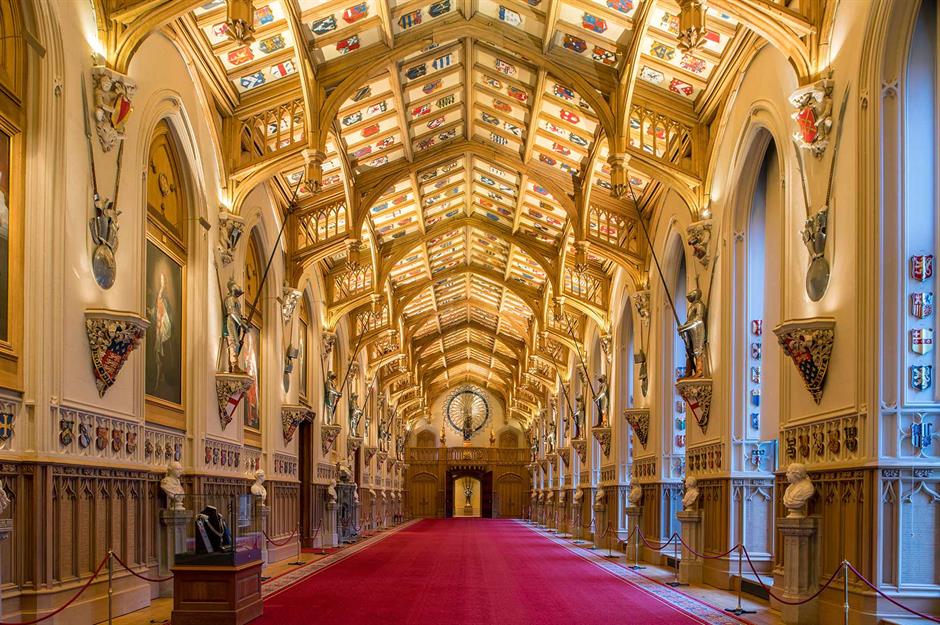
After the devastating fire, St George’s Hall was the prime focus of the project, including the reconstruction of its magnificent timbered ceiling. This masterpiece proudly displays the coats of arms of every Knight of the Garter since the order’s inception in 1348.
A true marvel of craftsmanship, the ceiling is the largest structure of its kind to have been built since the Middle Ages, standing as a testament to both historical tradition and modern engineering.
Meghan and Harry in St George's Hall
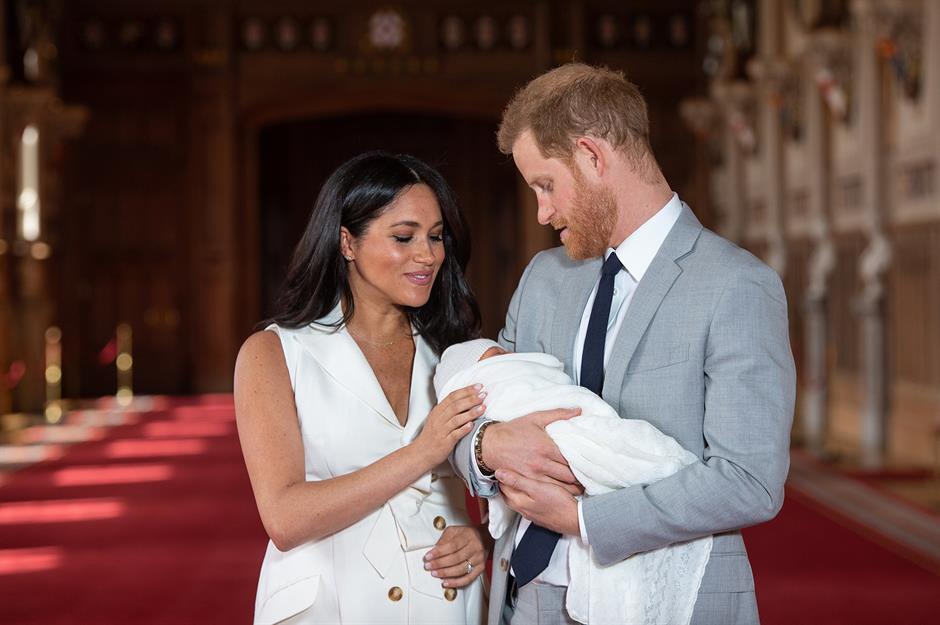
As the largest room in the castle, St George's Hall has been the backdrop for many royal occasions in recent years.
It was the setting for the wedding reception of the Duke and Duchess of Sussex in May 2018, and where they met with the world's press to show off baby Archie after he was born in May 2019 (pictured).
The Waterloo Chamber
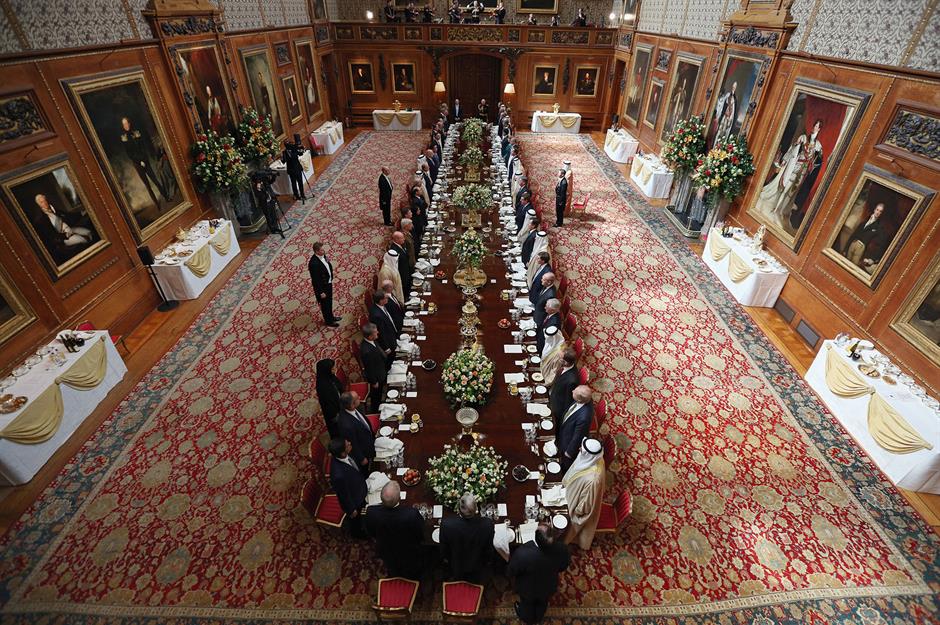
Another vital room in the castle, the Waterloo Chamber, pictured here, is on the main tour route at Windsor and is often used for investitures, where members of the public receive honours from a member of the royal family.
It was commissioned by King George IV and includes portraits of the monarchs, statesmen, and commanders involved in the defeat of Napoleon at the Battle of Waterloo, hence its name.
The Green Drawing Room

Another magnificent space within Windsor Castle is the Green Drawing Room, named for its striking green damask wallpaper.
This Semi-State Room, sitting on the east and south sides of the castle, is known for its warm, sunlit atmosphere. It has played host to many significant moments, including the official wedding photographs of the Duke and Duchess of Sussex.
Seen in this image, King Charles welcomed former US President Joe Biden here during the Climate Finance Mobilisation Forum in July 2023.
The White Drawing Room
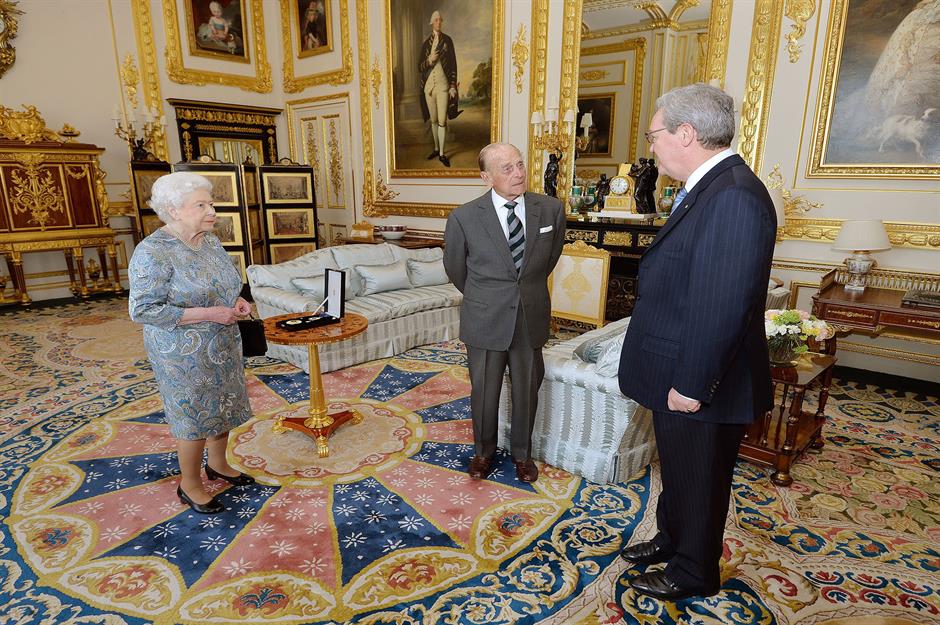
This room, which leads on to the Crimson Drawing Room and the Green Drawing Room, is decorated with cream silk broadloom damask and is where the late Queen often received dignitaries.
Queen Elizabeth frequently arranged small engagements in the White Drawing Room, in particular, audiences for ambassadors and diplomats from around the Commonwealth. She is seen here with her husband, Prince Philip, and Australia's former High Commissioner, Alexander Downer.
The scene for Charles and Camilla's wedding
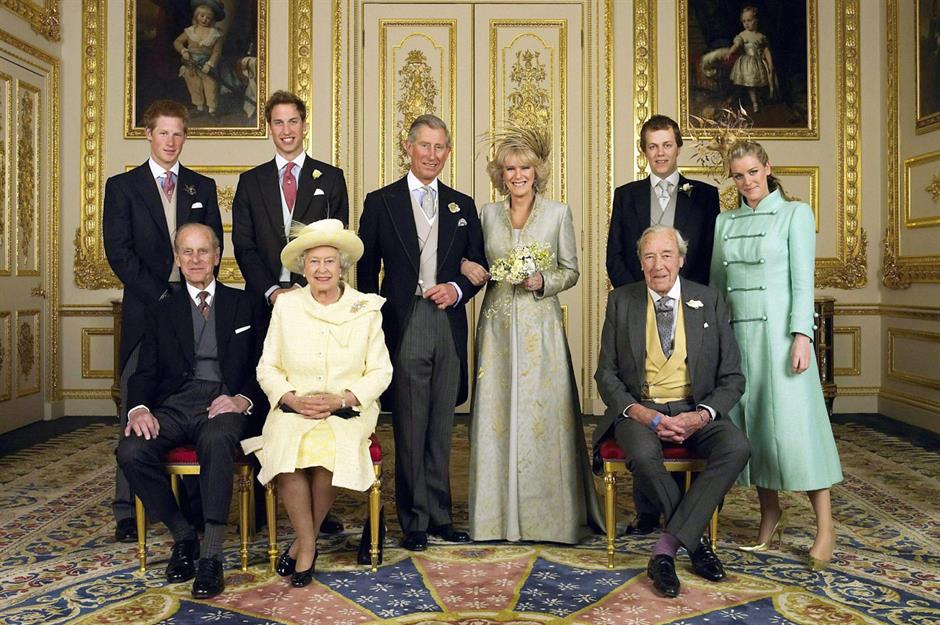
When King Charles III and Camilla married in April 2005, they chose the White Drawing Room for their wedding portraits. As well as the late Queen and the Duke of Edinburgh and the King’s two sons, Princes William and Harry, pictured are Camilla’s father, Major Bruce Shand, and her children, Tom and Laura Parker Bowles.
Prince Andrew’s daughter, Princess Eugenie, also chose the elegant room as a backdrop for her wedding photographs some years later in October 2018, when she married long-time boyfriend Jack Brooksbank.
Windsor's secret tunnel
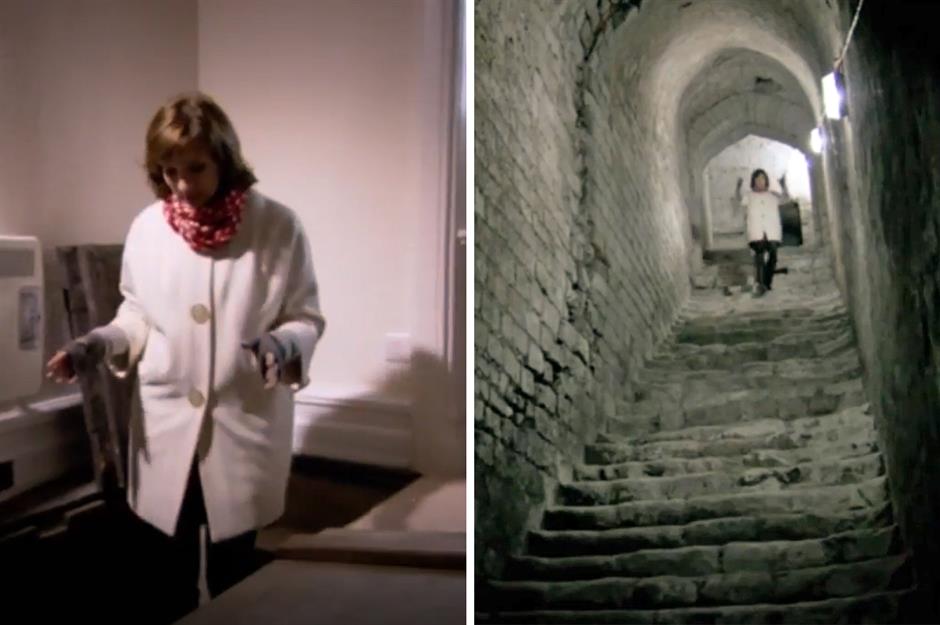
A castle as ancient as Windsor is bound to hold its share of secrets. Before it became the grand palace we know today, Windsor Castle was designed with hidden passageways and escape routes, essential for the safety and security of its inhabitants. One such passage, leading out into the streets, remains concealed within the castle to this day. Its entrance is cleverly hidden beneath the carpet in an unassuming office.
This fascinating secret was revealed in the BBC documentary The Queen's Palaces. The image shows presenter Fiona Bruce as she uncovers this hidden passage, shedding light on a lesser-known part of Windsor Castle’s intriguing past.
The Queen's return to Windsor
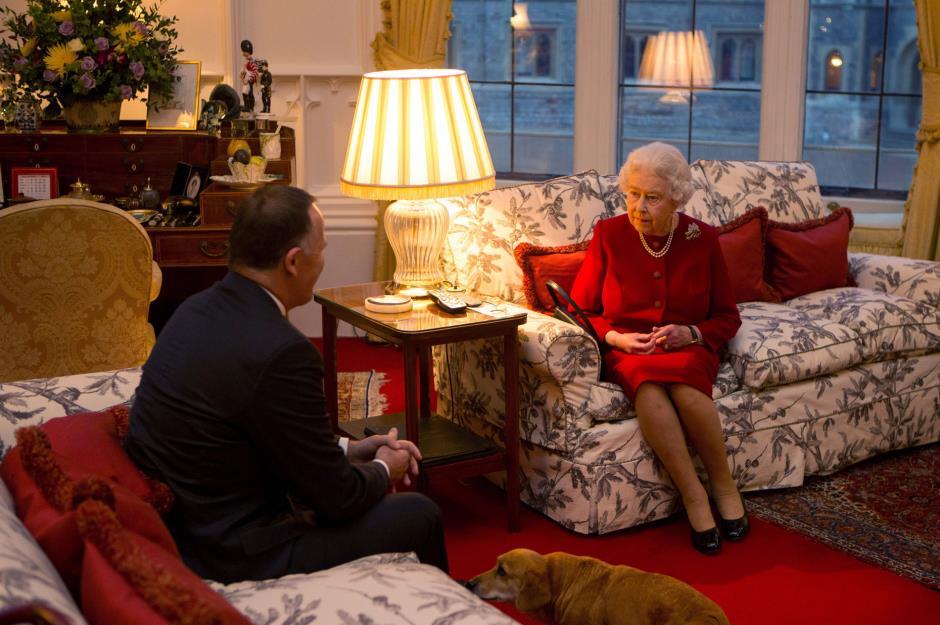
Initially a cherished weekend retreat, Windsor Castle became the primary residence and office of Queen Elizabeth II from the onset of the global pandemic in March 2020. It remained her beloved home until her peaceful passing at Balmoral Castle in September 2022.
The private apartments are normally kept away from prying eyes, but this rare glimpse shows the late Queen in her sitting room meeting the former New Zealand Prime Minister John Key.
Squishy floral sofas, cosy lighting, and plush carpet make for a welcoming space that's a world away from banqueting halls and turrets.
Hosting heads of state
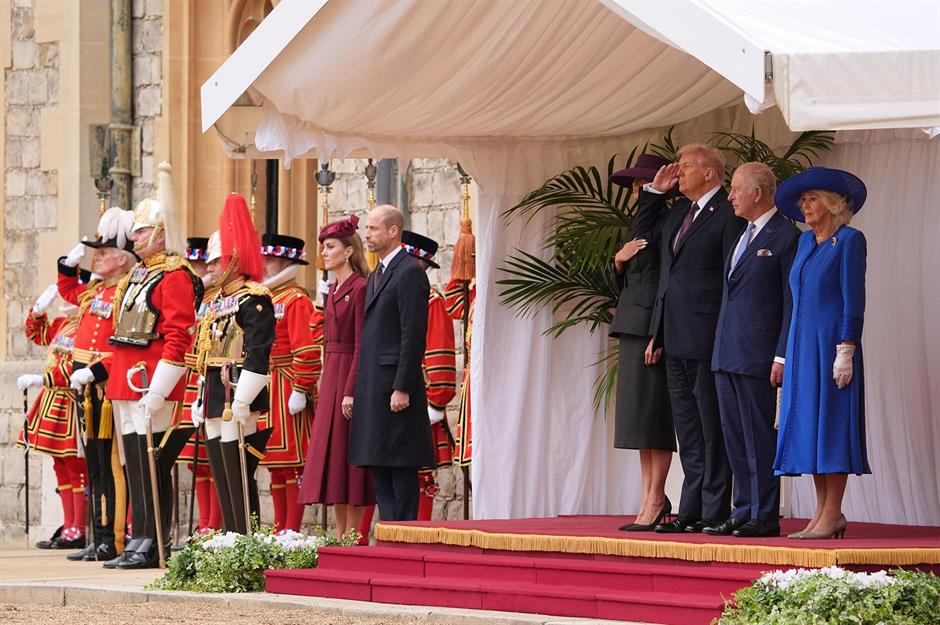
King Charles welcomed Donald Trump to Windsor Castle on his second state visit to the UK. The US President, accompanied by First Lady Melania, travelled with the monarch and Queen Camilla via ornate carriages and was greeted in the castle's scenic quadrangle by a ceremonial parade.
The Prince and Princess of Wales also joined the prestigious guests for a flypast over Windsor by the Red Arrows and a lavish evening banquet in St George's Hall.
St George's Chapel
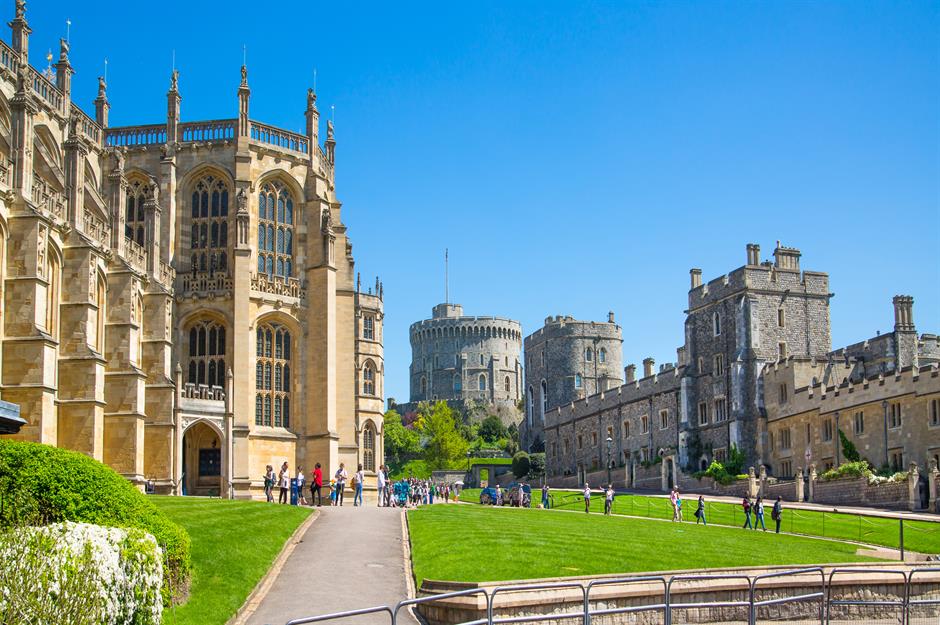
St George’s Chapel, located within the grounds of Windsor Castle, is a site of deep historical and royal significance. It has been the setting for notable royal weddings, including those of Prince Harry and Meghan Markle, as well as Princess Eugenie.
The chapel also serves as the spiritual home of the prestigious Order of the Garter, an ancient chivalric order founded by King Edward III in the 14th century with members including King Charles III and Prince William. The chapel is the final resting place for many other famous royals, including Henry VIII and Charles I. Their burial places are marked by a plaque on the floor in the medieval quire.
Inside the royal chapel
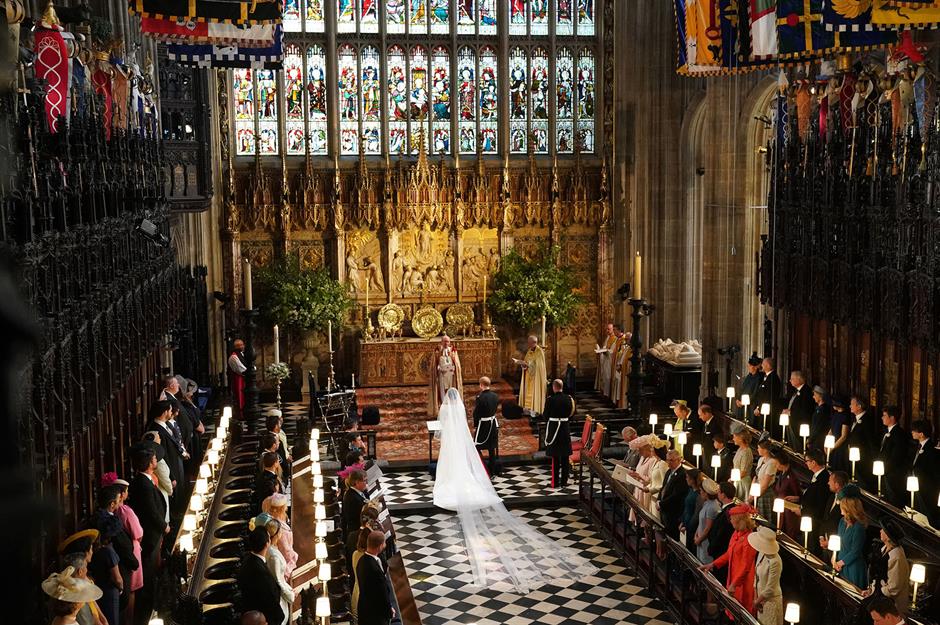
St George’s Chapel is widely regarded as one of England’s finest masterpieces of Gothic architecture. Its awe-inspiring interior is adorned with intricate medieval carvings, magnificent Victorian stained glass windows, and the unique coats of arms of every Knight of the Garter throughout history.
These elements combine to create a space of unparalleled beauty and immense historical significance, reflecting centuries of royal and chivalric tradition.
Prince Philip's funeral
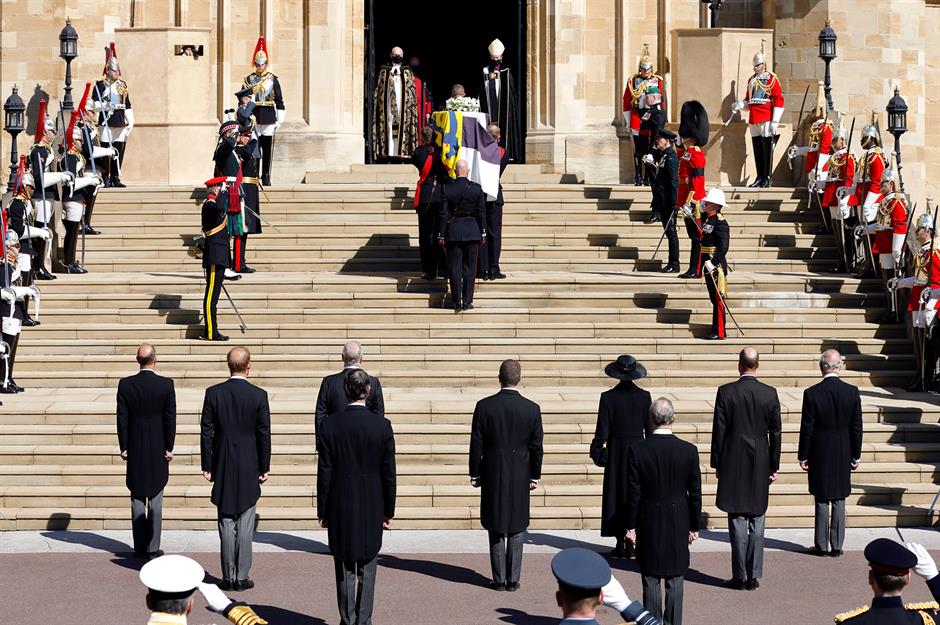
In April 2021, St George's Chapel played host to the funeral of Prince Philip, Duke of Edinburgh. In accordance with his wishes, the Duke's coffin was driven from Windsor Castle to the chapel in a custom-built Land Rover Defender before being carried up the steps by eight pallbearers from the Royal Marines. Due to COVID-19 restrictions, the Queen sadly had to sit alone in the Chapel to bid farewell to her husband of 73 years.
The Queen's funeral
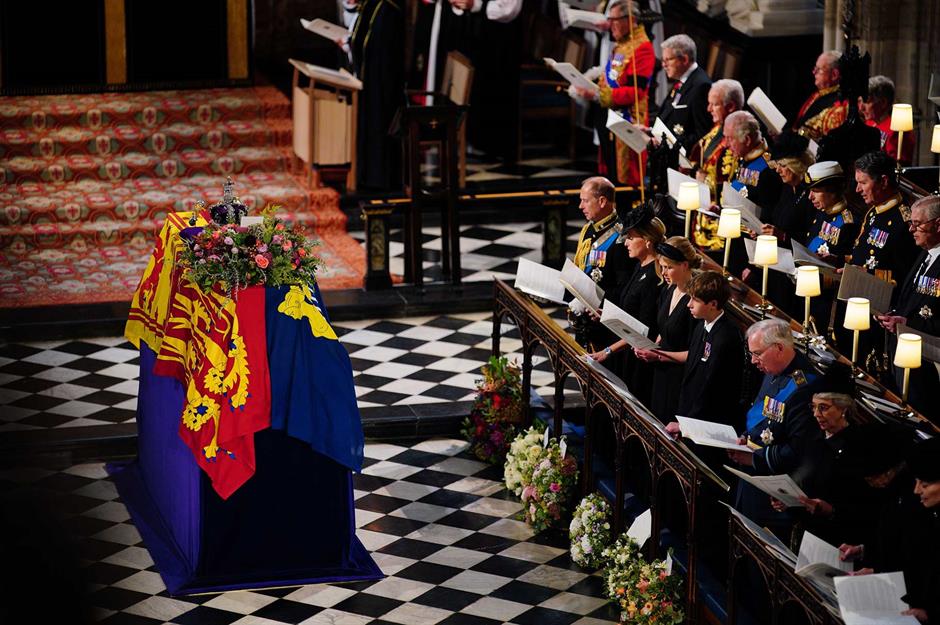
Fewer than 18 months later, on 19 September 2022, St George’s Chapel at Windsor Castle became the Queen’s final resting place, in accordance with her wishes. After a state funeral held at Westminster Abbey, the late Queen returned home to Windsor one final time.
The funeral procession progressed from Central London back to Windsor up the Long Walk, which had been strewn with flowers by the thousands who came to pay their respects. Finally, after a committal service in St George’s Chapel, the Queen was interred beside her husband, Phillip.
King Charles III at Windsor
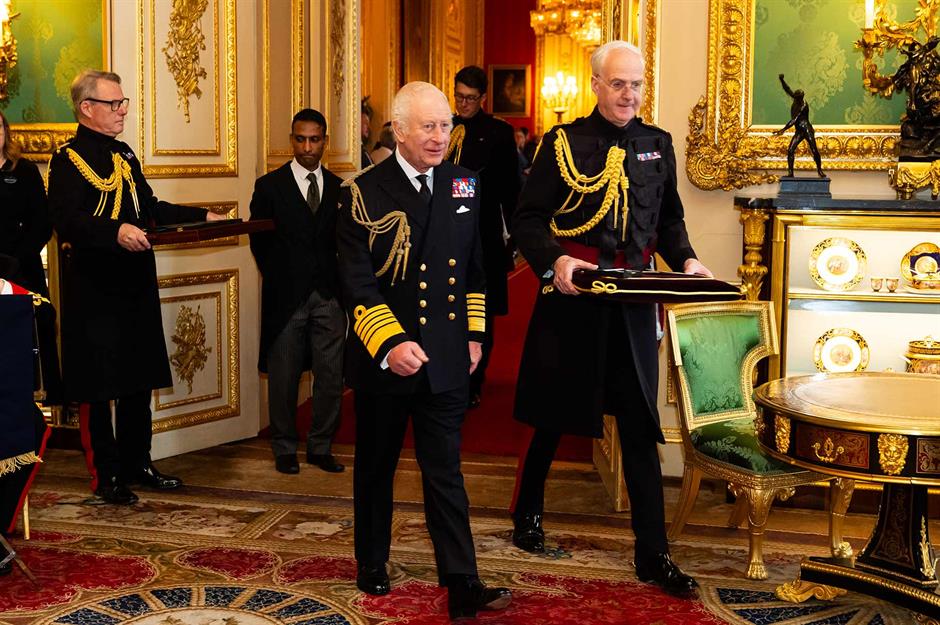
In happier times, Windsor Castle played a substantial role in the coronation celebrations for King Charles III, including as the location for the official Coronation Concert, which saw several thousand members of the public selected by random ballot attend a concert in the castle grounds.
While Charles was diagnosed with cancer in February 2024, he is still undertaking active royal duties within Windsor Castle and other royal properties. He is seen here in December 2024.
The future of Windsor?
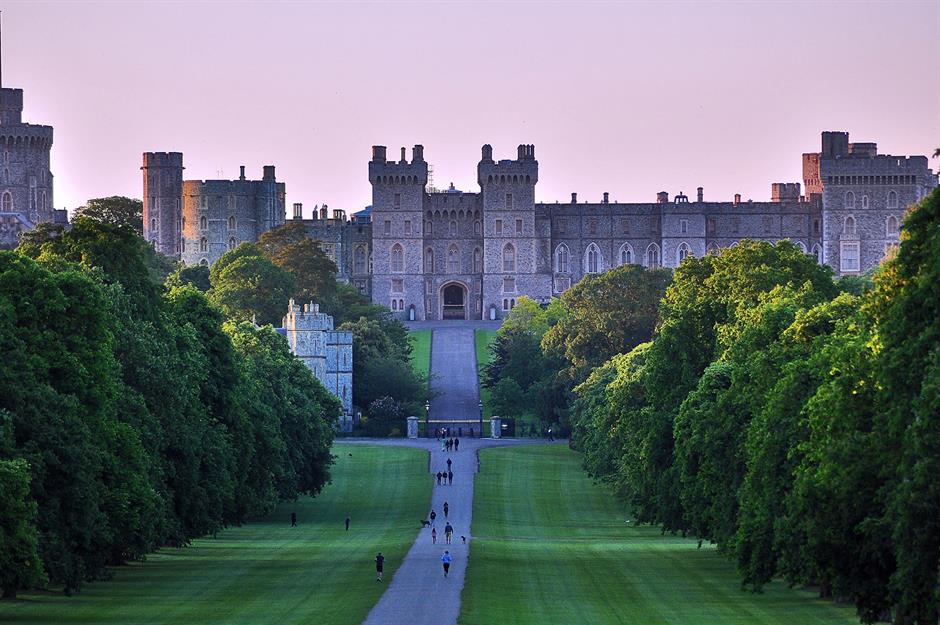
Though steeped in the most venerable British history and stuffed full of treasure and artworks, Windsor Castle still plays an important role in the monarchy's affairs.
As the buildings, staff, and residents embark on a new chapter under King Charles, time will tell what the future holds for this magnificent royal residence.
Loved this? See inside more royal homes and castles
Comments
Be the first to comment
Do you want to comment on this article? You need to be signed in for this feature